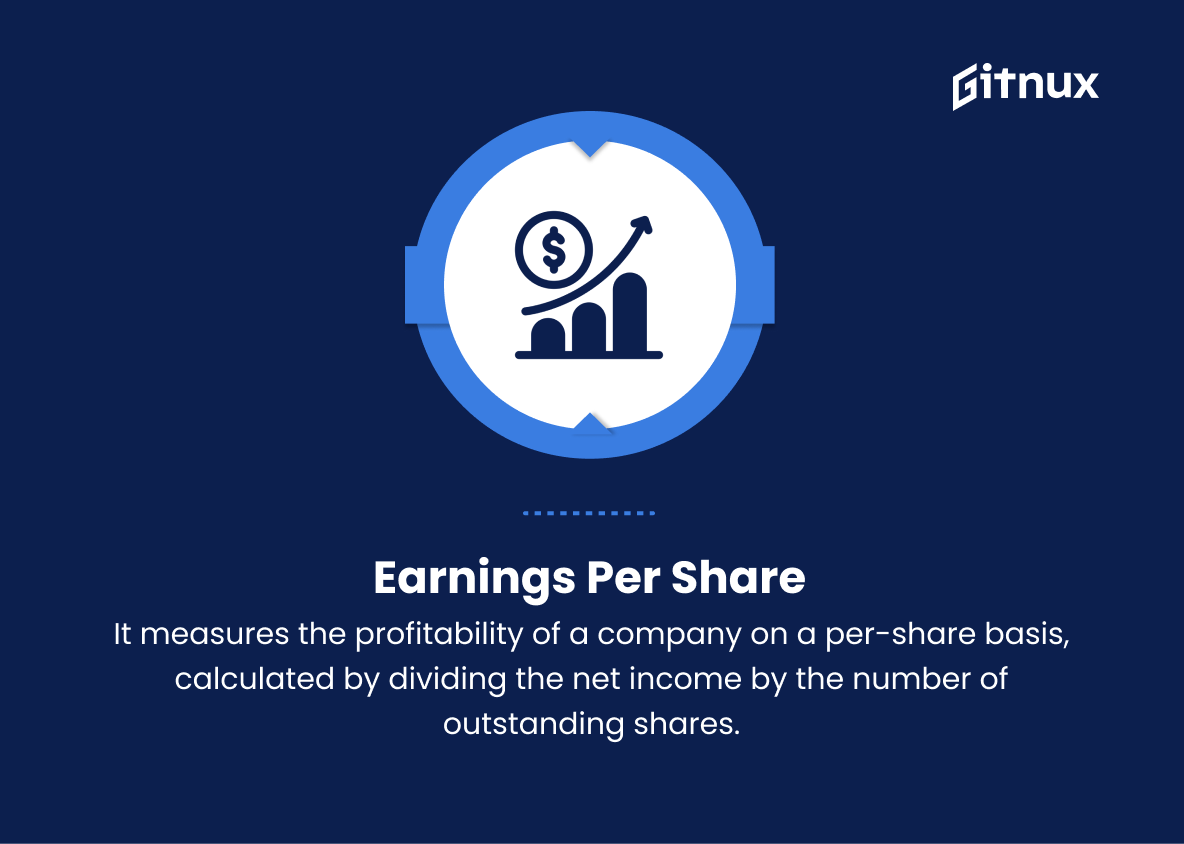In today’s rapidly evolving business landscape, the importance of incorporating equity metrics within organizational strategies and decision-making processes cannot be overstated. Despite the growing awareness surrounding the significance of diversity, inclusion, and equitable practices, there is still much work to be done in building a more just and inclusive world.
In this thought-provoking blog post, we will delve deeper into the realm of equity metrics, examining critical factors that contribute to equitable outcomes, and how these standards can be effectively implemented across diverse industries. Join us as we embark on a journey to understand the vital elements of equity, as we strive to create organizations that not only value the differences among their workforce but also actively work towards closing the gap of systemic inequalities.
Equity Metrics You Should Know
1. Earnings Per Share (EPS)
It measures the profitability of a company on a per-share basis, calculated by dividing the net income by the number of outstanding shares.
2. Price-to-Earnings Ratio (P/E Ratio)
This ratio compares the price of a stock to its earnings per share. It helps investors determine the relative value of a stock compared to its peers within an industry.
3. Dividend Yield
This metric calculates the annual dividend payments as a percentage of the stock’s current market price. It indicates the income an investor can expect to receive from holding a stock.
4. Return on Equity (ROE)
This measure represents the profitability of a company, calculated as net income divided by shareholder equity. It shows how effectively a company is using its shareholder investments to generate profits.
5. Price-to-Book Ratio (P/B Ratio)
It compares a company’s market value to its book value (total assets minus total liabilities). This ratio indicates the relative value of a company compared to its worth on paper.
6. Book Value Per Share
This metric measures the net asset value of a company on a per-share basis, calculated by dividing total shareholder equity by the number of outstanding shares.
7. Dividend Payout Ratio
It measures the percentage of a company’s earnings that are paid out as dividends to shareholders, calculated by dividing the annual dividend payments by earnings per share.
8. Price-to-Sales Ratio (P/S Ratio)
This ratio compares a company’s market value to its total revenue, allowing investors to evaluate the relative value of a stock based on its sales performance.
9. Debt-to-Equity Ratio (D/E Ratio)
This metric examines how a company is financing its operations by comparing its total debt to its shareholder equity, reflecting the financial risk associated with the company’s capital structure.
10. Current Ratio
A liquidity ratio that measures a company’s ability to pay short-term obligations, calculated by dividing current assets by current liabilities.
11. Enterprise Value (EV)
This measure considers a company’s market capitalization, debt, and cash, providing a more comprehensive view of a company’s value and size.
12. Gross Margin
This metric measures a company’s profitability before accounting for overhead costs, calculated as gross profit divided by total revenue, expressed as a percentage.
13. Operating Margin
This measure represents the profitability of a company after accounting for operating costs, calculated as operating income divided by total revenue, expressed as a percentage.
14. Net Profit Margin
The percentage of revenue that remains as net profit after accounting for all expenses, calculated as net income divided by total revenue.
15. Return on Assets (ROA)
This ratio measures how effectively a company is using its assets to produce profit, calculated by dividing net income by total assets.
Equity Metrics Explained
Equity metrics play a crucial role in assessing a company’s financial performance and determining its attractiveness to investors. Metrics such as Earnings Per Share (EPS) and Return on Equity (ROE) highlight a company’s profitability, while Price-to-Earnings Ratio (P/E Ratio) and Price-to-Book Ratio (P/B Ratio) help investors compare stock value relative to industry peers. Dividend Yield and Dividend Payout Ratio offer insights into the income potential from holding a stock.
Book Value Per Share and Enterprise Value (EV) provide information on a company’s net asset value and overall worth, respectively. Ratios like Price-to-Sales Ratio (P/S Ratio) and Gross, Operating, and Net Profit Margins offer insights into how efficient a company is at generating revenue and managing costs. The Debt-to-Equity Ratio (D/E Ratio) and Current Ratio provide a glimpse into a company’s financial risk and capacity to meet short-term obligations. Lastly, Return on Assets (ROA) measures a company’s ability to utilize its assets to generate profit. These metrics together create a comprehensive picture of a company’s financial health and potential investment opportunities for shareholders.
Conclusion
In conclusion, the significance of equity metrics cannot be overstated in today’s rapidly changing business landscape. As organizations strive for optimal performance, transparency, and affordability, it is essential to comprehend, track, and evaluate these standards to ensure equitable opportunities for all stakeholders.
By incorporating equity metrics into business strategies, organizations not only highlight their commitment to social responsibility but also create a conducive environment for growth and innovation. Ultimately, fostering diverse and inclusive workplaces will not only stimulate potential, but also positively impact our societies, economies, and environments at large. Stay focused on the bigger picture, make strategic decisions, and let equity metrics be your guiding light, propelling businesses and the world toward a more equitable future.















